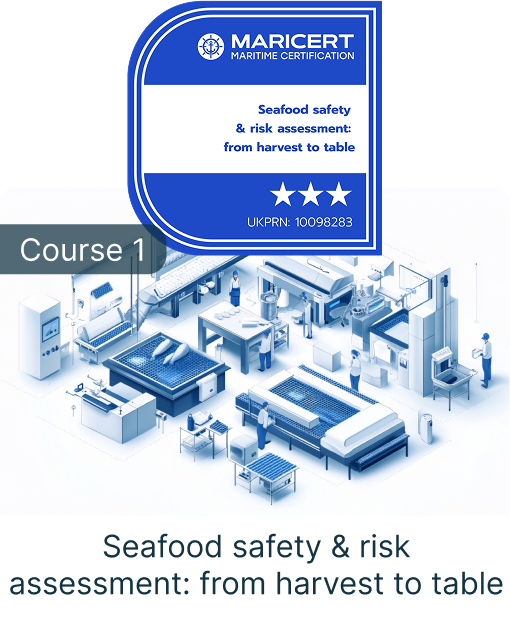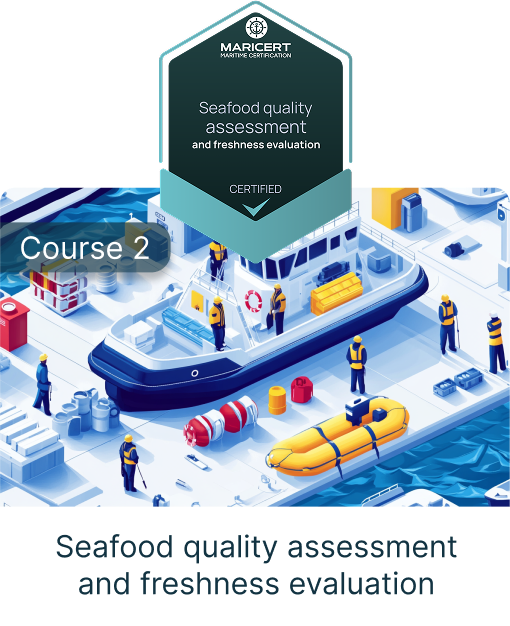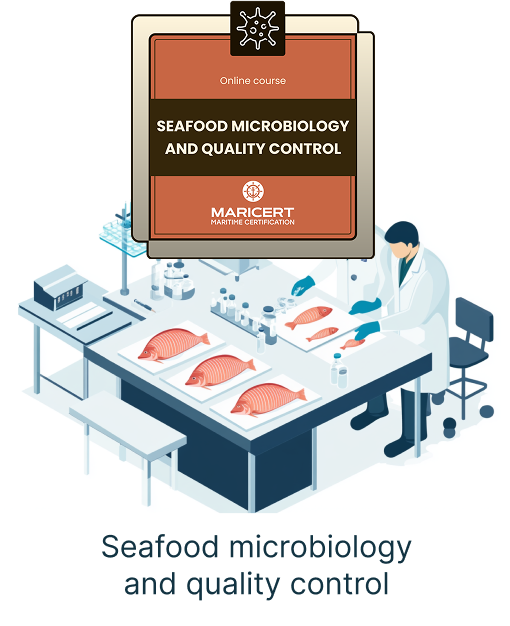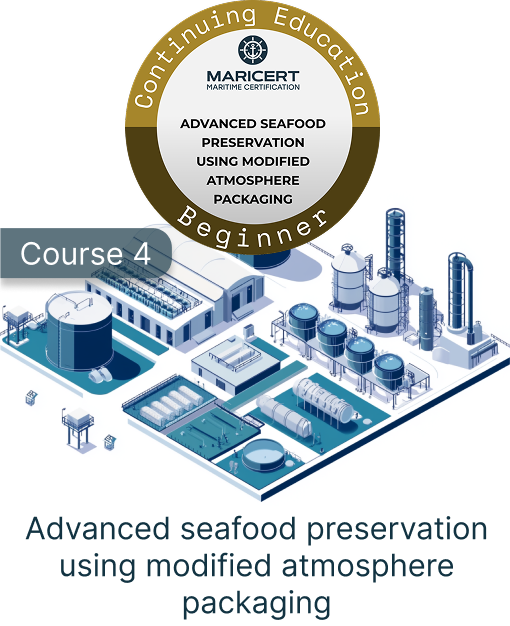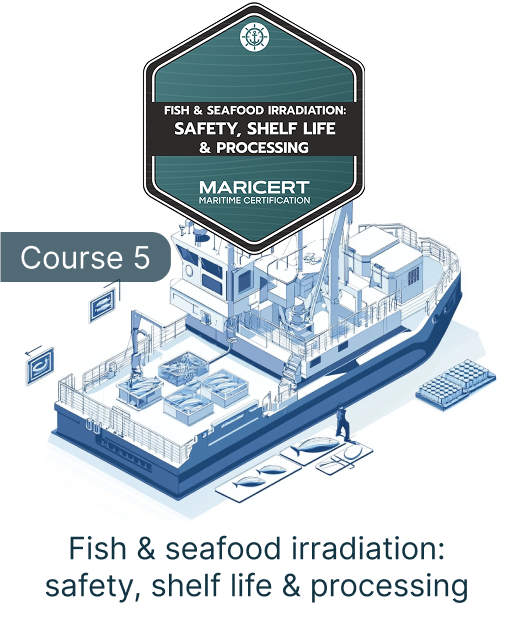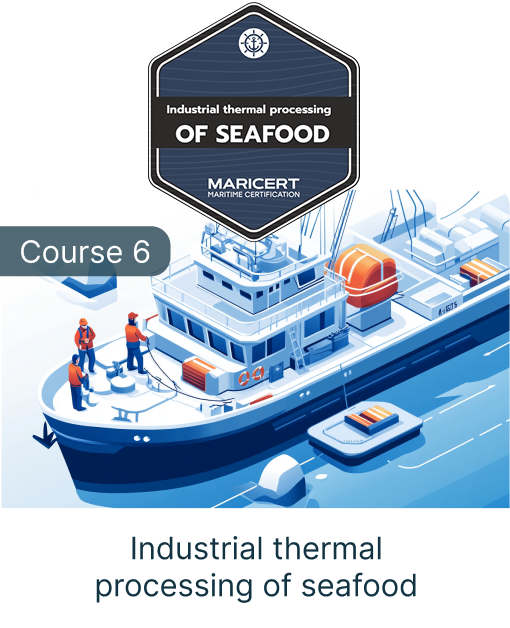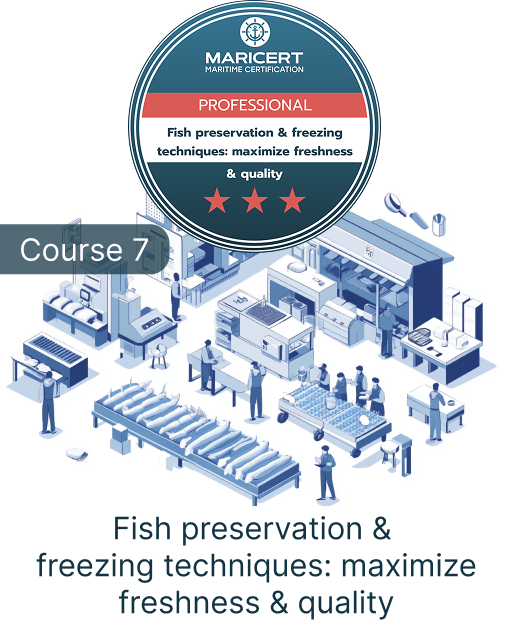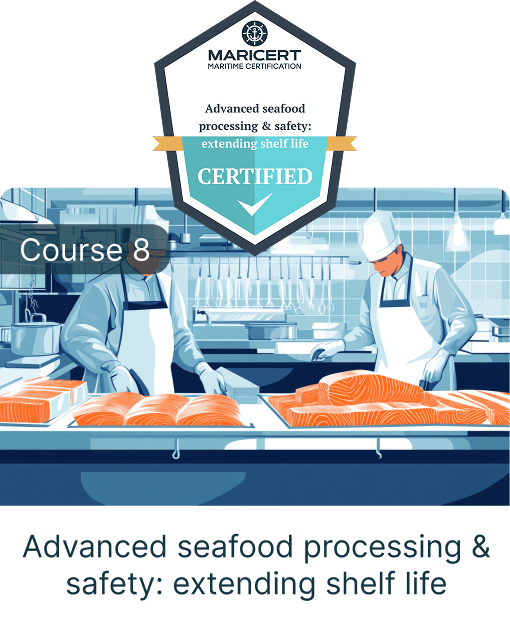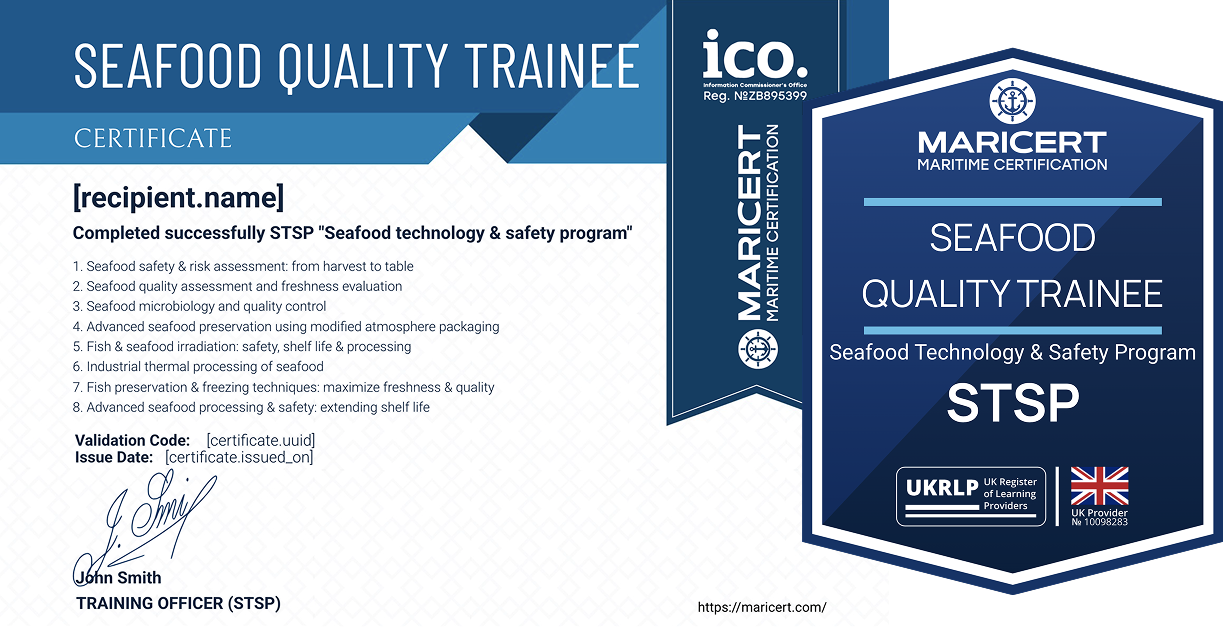Advanced seafood preservation using modified atmosphere packaging
LESSONS
- Glossary
- Modern packaging approaches for fish and seafood products
- Key principles and role of modified atmosphere packaging for fresh fish
- Carbon monoxide and nitrogen in modified atmosphere packaging
- Impact and industrial significance of modified atmosphere packaging
- Effect of MAP on oxidative rancidity in fish products
- Specific spoilage organisms under various modified atmosphere conditions
- Additional microbiota effects of MAP in marine and freshwater fish
- Effect of modified atmosphere packaging on fish spoilage mechanisms
- MAP impact on fish spoilage and microbial safety
- Listeria monocytogenes in modified atmosphere packaging
- Application of modified atmosphere packaging to fish and seafood products
- High-oxygen MAP and packaging strategies for shelf life extension in seafood
- Advanced barrier and active packaging solutions for sustainable seafood preservation
- References
- Test
- Certificate
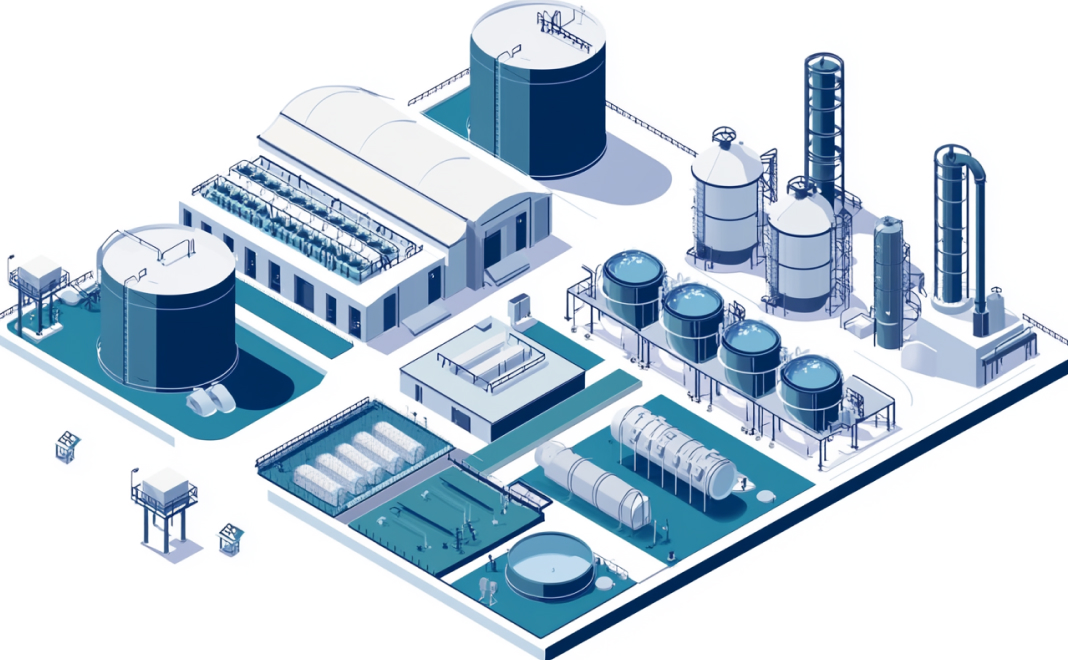
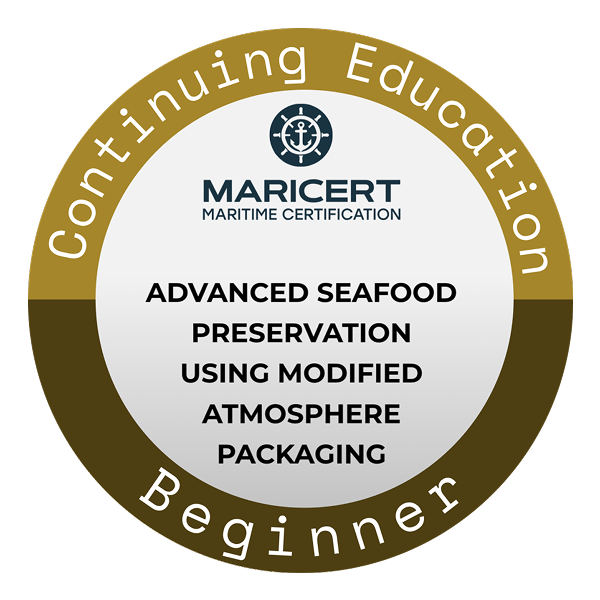
Duration
7–9 hours for studying the theoretical material, 2 hours for completing the final test.
Certificate
Upon successful completion of the online course, you will receive a certificate titled:
"Advanced Seafood Processing & Safety: Extending Shelf Life".
lifetime certificate.
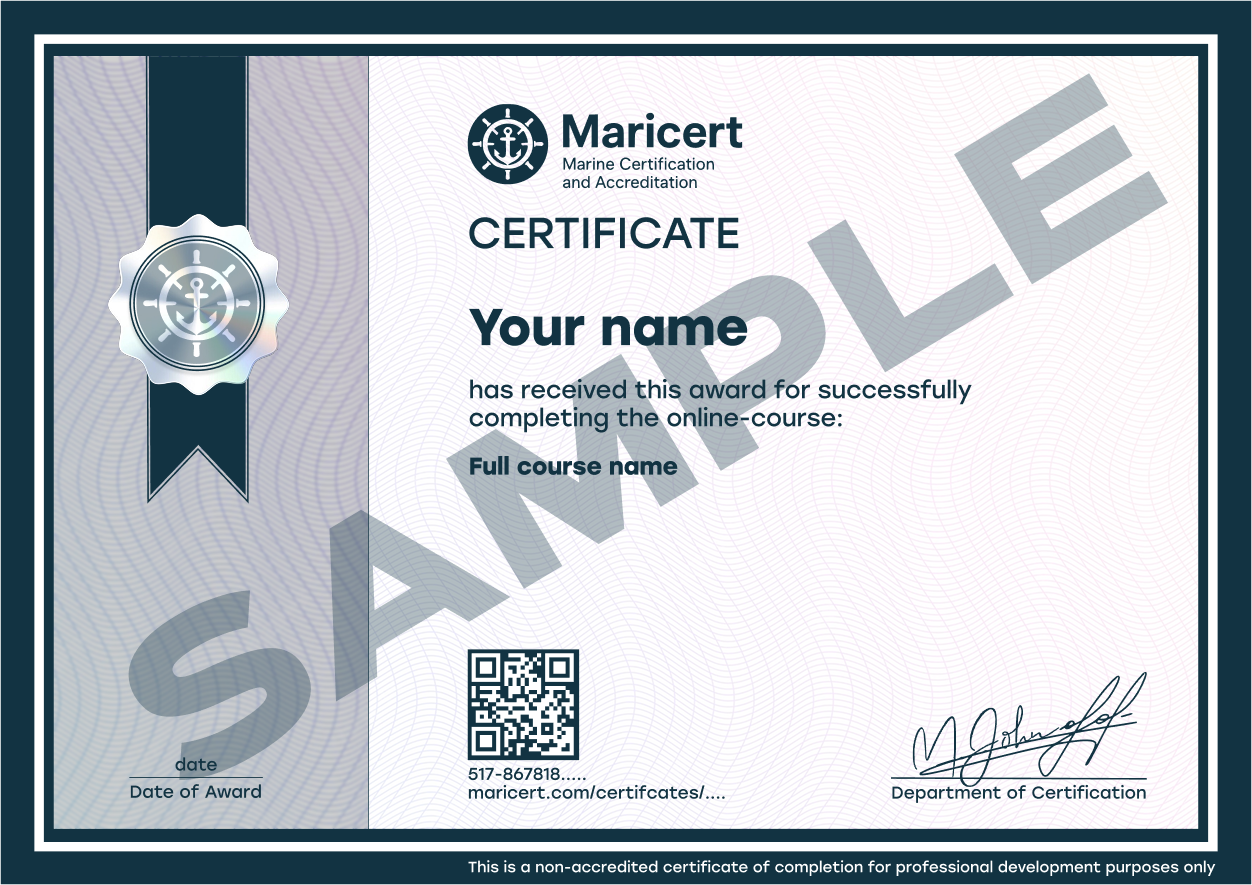

SEAFOOD TECHNOLOGY AND SAFETY PROGRAM
This course is part of the Seafood Technology and Safety Program (STSP). After completing all courses in the program, you’ll be eligible to receive the Seafood Quality Trainee Certificate, officially registered in our verification database. You can share it on social media or add it to your CV to increase your chances of getting hired in the seafood industry — including сrab and fishing fleets, seafood factories, and more.
Course description
This course explores the science, technology, and application of modified atmosphere packaging (MAP) for fish and seafood products. It examines the roles of carbon dioxide, oxygen, nitrogen, and carbon monoxide in microbial control, color retention, and shelf life extension. You will learn how gas composition, temperature, and packaging materials influence spoilage, safety, and sensory quality. The course covers packaging design, gas-product ratio, vacuum techniques, MAP applications for different fish types (lean, fatty, crustaceans), and regulatory considerations. Practical case studies reveal microbial dynamics, including specific spoilage organisms (SSOs) under various MAP conditions. You’ll also explore innovations in active and intelligent packaging systems, high-barrier films, oxygen scavengers, and bio-based packaging solutions. Emphasis is placed on food safety, especially concerning Clostridium botulinum and Listeria monocytogenes. By the end, you’ll understand how MAP can be optimized to reduce waste, meet consumer demand, and maintain product integrity across distribution chains. This course integrates research, real-world practices, and modern sustainability trends shaping the seafood packaging industry.
What you’ll learn
- how gas mixtures affect shelf life, spoilage organisms, and fish safety
- the differences between MAP, vacuum, and high-oxygen packaging
- MAP strategies for lean, fatty, raw, smoked, and cooked seafood
- the role of packaging materials and intelligent indicators
- regulatory and microbiological risks in MAP seafood products
Who this course is for
- This course is ideal for seafood processors, packaging engineers, food safety professionals, product developers, and researchers working with chilled, ready-to-eat, or value-added seafood. It's also valuable for students and regulators seeking to understand MAP's industrial relevance and safety implications.
FAQ
First, please check your spam or promotions folder — sometimes emails land there. If you still don’t see anything, contact us at https://maricert.com/contact/ — we’ll check your order and grant access as soon as possible.
You can retake the test as many times as needed. There are no penalties or additional fees.
Yes. All lessons and tests are in written format. You can use Google Chrome with auto-translation or third-party tools. Our goal is to make learning accessible to everyone.
Absolutely. The platform is fully optimised for mobile. You can study from your phone, tablet, or laptop — whichever is most convenient for you.
You get 12 months of access from the date of purchase. You can study at your own pace. If the course isn’t completed within that period, access will be revoked without a refund. Refunds are not available once access is granted, as digital content is considered delivered in full (as per the UK Consumer Contracts Regulations 2013).
Your certificate will be sent to your email and also registered in the Certifier.io verification database. You'll receive a PDF version that you can attach to your CV.
Each certificate includes a unique ID and QR code. Employers can verify authenticity via the Certifier database or directly through the Maricert website.
Yes. We recommend including a direct Certifier.io link in your CV, cover letter, or LinkedIn profile to help build trust with employers.
No. Our courses are open to everyone, including beginners. You don’t need any maritime documents to enrol.
They can be added to your CV when applying for jobs on crabbing vessels, fishing fleets, seafood factories, and maritime logistics companies. They’re especially valuable for those with no prior experience.
Yes. While our certificates don’t guarantee a visa, they can serve as additional proof of qualifications when applying for seasonal or work visas.
We are not a recruitment agency, but our certificates and diplomas can improve your chances when applying directly to employers — especially if you’re new to the industry.
Yes. Maricert is officially registered in the UK Register of Learning Providers (UKPRN: 10098283) and complies with ICO (Information Commissioner's Office) data protection regulations.
Yes. You can purchase a course using another person’s email address or contact support to have access transferred after the purchase.

